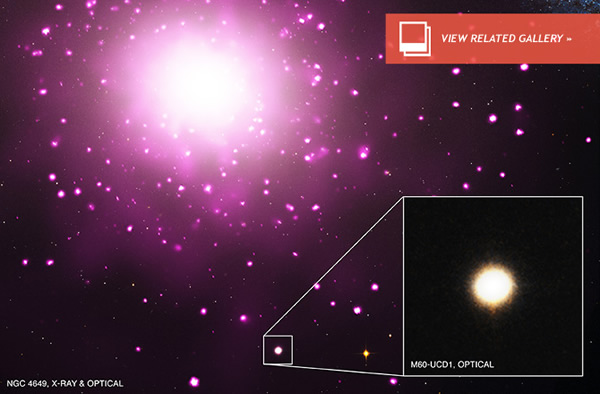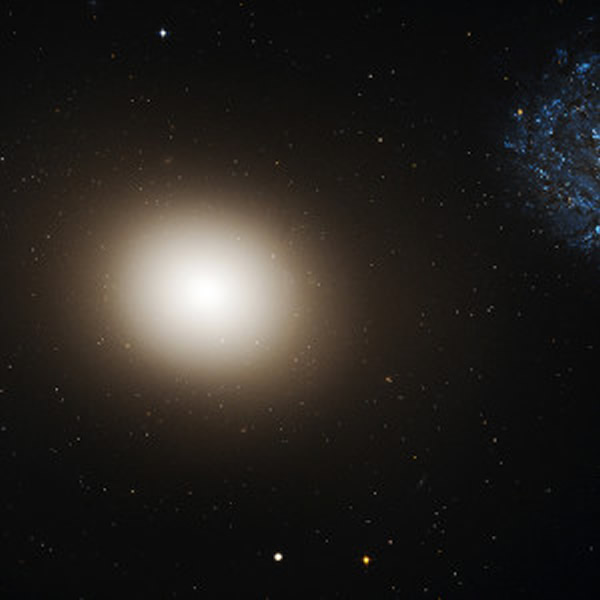Super-Dense Galaxy a Victim of Stellar Robbery?
The super-dense galaxy M60-UCD1, seen in the inset, is located 54 million light-years away
It’s a case of cosmic whodunit: What happened to all the external stars in M60-UCD1, an ultra-compact dwarf galaxy located 54 million light-years away, near the fringes of the bright M60 galaxy in the constellation Virgo?
Despite its diminutive title this dwarf galaxy is packing a lot of mass — over 200 million times the mass of the sun is stuffed inside it, making M60-UCD1 one of the densest local galaxies ever discovered, if not the densest.
What’s more, over half of that mass is found within a region only 160 light-years across. Stars there are 25 times closer together than they are in our neighborhood of the Milky Way.
“Traveling from one star to another would be a lot easier in M60-UCD1 than it is in our galaxy,” said Jay Strader of Michigan State University in Lansing, first author of a new paper describing these results.
The question is: how did M60-UCD1 get so dense? Did it originally form as a crowded star cluster? Or is it what’s left of an even larger galaxy… one that’s had its outer stars stolen away during a run-in with another galaxy?
This is where the x-ray vision of NASA’s Chandra space observatory comes in.
Optical HST image of M60. Dwarf galaxy M60-UCD1 is the bright object at bottom-left center.
After its discovery with the Hubble Space Telescope, the super-dense dwarf galaxy was observed with Chandra. Inside it, Chandra spotted a bright x-ray source which may indicate the presence of a central supermassive black hole 10 million times more massive than our sun.
Since supermassive black holes aren’t found in star clusters that we know formed as star clusters, then it’s very likely that, if the x-ray source is in fact a SMBH, M60-UCD1 was once an enormous galaxy up to 200 times more massive than it is now — but its stars were lost in a galactic collision at some point.
“We think nearly all of the stars have been pulled away from the exterior of what once was a much bigger galaxy,” said co-author Duncan Forbes of Swinburne University in Australia. “This leaves behind just the very dense nucleus of the former galaxy, and an overly massive black hole.”
Estimated to be about 10 billion years old, M60-UCD1′s tragic star stripping event may have taken place fairly early in its evolution, leaving it in its diminished state for the past several billion years.
(I wonder what the statute of limitations is on grand stellar larceny?)
The results of this study are online and have been published in the September 20th issue of Astrophysical Journal Letters.
Image credits: X-ray: NASA/CXC/MSU/J.Strader et al, Optical: NASA/STScI(Sep 25, 2013 05:59 AM ET // by Jason Major)













